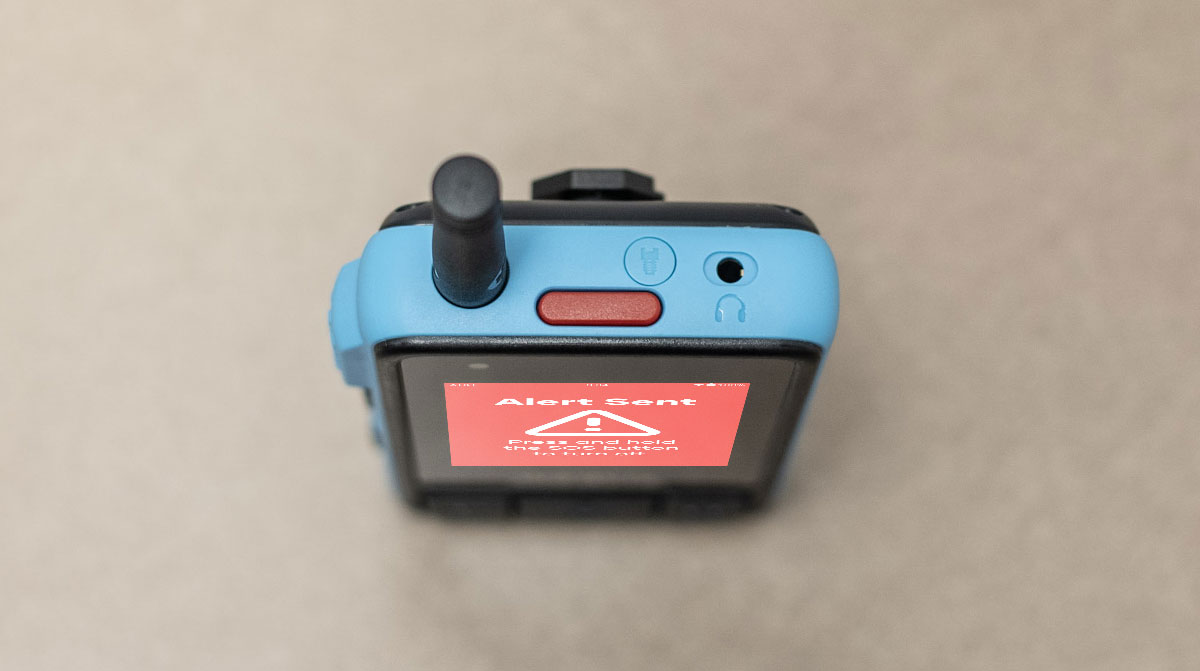It was mid-afternoon on Tuesday when Miguel left his station on the production line because he wasn’t feeling well, but he was afraid to tell anyone. He headed to the restroom, hoping to splash some water on his face and collect himself. But as he entered the facility, a wave of dizziness overwhelmed him, and he collapsed on the tile floor.
Key Highlights
- A worker collapsed unnoticed due to communication silos, with delays worsened by noise, distance, and lack of personal devices, exposing critical safety risks.
- Hierarchical communication and language barriers slow emergency responses, turning minor hazards into major crises and erasing vital evidence.
- Universal smart radios with AI translation, noise cancellation, and GPS tracking enable direct, instant communication and empower workers as first responders.
- Modern communication systems reduce delays, improve safety, and ensure workers can summon help immediately, protecting both lives and productivity.
Fifteen minutes passed before Sarah, Miguel’s coworker, noticed his absence. In the rhythm of manufacturing, workers occasionally step away briefly, but Miguel had been gone for too long. She began asking nearby colleagues if they’d seen him, but no one had noticed where he went.
Company policy prohibited personal cell phones on the production floor, so Sarah couldn’t simply text or call Miguel to check on him. She decided to search the most likely places, starting with the break room, even though it wasn’t break time. Finding it empty, she asked a male coworker to enter the restroom nearest Miguel’s station.
There, he found Miguel collapsed on the floor, unconscious and pale. He shouted for Sarah to enter. Without a cell phone or walkie-talkie, Sarah immediately ran from the restroom, shouting for assistance across the vast facility, her voice unable to be heard over the 100 dB machinery noise. Racing toward the emergency phone mounted on a wall 200 feet away, precious seconds ticked by while Miguel lay unresponsive.
>>>> Learn how the Walt Smart Radio System sets the standard for modern industrial communication.
The hidden safety risk of communication silos
This scenario reveals a dangerous flaw in traditional industrial safety systems: workers closest to hazards often have the least ability to quickly summon help. Hierarchical communication structures leave frontline workers isolated during the moments when communication matters most.
Many manufacturing facilities span enormous distances, some covering millions of square feet across multiple buildings. When emergencies strike, searching for help can require abandoning the victim and navigating maze-like layouts to reach fixed communication points. These searches are time-consuming, especially when a coworker is unable to breathe or has been exposed to hazardous substances.
Multilingual workforces face additional risks. Language barriers can prevent accurate communication of critical details. A worker who speaks limited English might struggle to explain the nature of a medical emergency, the location of a hazard, or the urgency of the situation.
When seconds become hours: The escalation effect
Research reveals a dangerous disconnect in frontline communication. One study found that while 65% of frontline leaders believe they possess effective communication strategies, only 35% of frontline workers feel that they are being heard. These gaps become critical when emergencies strike.
Communication delays create a predictable cascade where minor safety concerns escalate into facility-wide crises. Consider a line worker who spots hydraulic fluid pooling beneath a press. They must abandon their station, hunt for a supervisor, explain the situation, and wait for the supervisor to locate the appropriate technician.
Meanwhile, the leak worsens. Other workers, unaware of the expanding hazard, continue operating nearby equipment. What should be a quick cleanup transforms into a slip-and-fall risk affecting multiple work areas.
Critical evidence disappears as work areas are cleaned while workers search for proper reporting channels. A welder, noticing electrical arcing, can’t immediately photograph the hazard. By the time he navigates the communication hierarchy, the equipment has cooled, making the danger invisible to responding technicians.
Breaking barriers with universal communications
Forward-thinking safety leaders recognize that democratizing communications across the workforce eliminates the isolation that plagues traditional facilities. When every worker carries a communication device, frontline employees transform from helpless observers into empowered first responders.
This approach dismantles hierarchical communication delays. A machine operator detecting unusual vibrations can directly reach maintenance specialists without routing requests through absent supervisors. Medical emergencies trigger simultaneous notifications to medical personnel, management, and emergency services.
AI-powered translation capabilities address multilingual workforce challenges directly. When a Spanish-speaking worker reports a chemical spill, the system instantly translates the message for emergency responders, preserving urgency and accuracy.
Smart radio systems revolutionize safety documentation by enabling workers to instantly capture incident photos and transmit reports to safety professionals. One-touch emergency alerts eliminate confusion during high-stress situations. Location awareness through GPS integration guides responders directly to incident sites. Voice communication with noise cancellation enables clear coordination, allowing workers to keep their hands free for tasks such as administering first aid or shutting down equipment.

Response with universal comms: From chaos to coordination
Let’s reimagine Miguel’s collapse with smart radio communication in place. When Miguel feels unwell, he tells his team lead through a smart radio text: “I’m not feeling well, heading to the restroom to check on myself.” This creates an automatic timestamp and location record.
When Sarah notices Miguel’s extended absence, she can instantly reach him through the radio system: “Miguel, everything okay? You’ve been gone about 15 minutes.” When she receives no response, she immediately alerts her supervisor and facility medical personnel with one button press: “Medical check needed…Miguel went to the restroom 15 minutes ago…not responding to radio calls.”
The system’s location tracking shows Miguel’s position, guiding Sarah directly to the correct restroom. Upon finding Miguel unconscious, she presses her emergency button and speaks clearly: “Medical emergency in Building A restroom near production line 3. Worker unconscious on the floor.”
Within seconds, facility teams receive Sarah’s precise location and move toward the restroom with emergency equipment. The plant operations and safety manager receives the time-stamped alert simultaneously and coordinates with emergency medical services. A nearby supervisor, alerted through a dedicated, permission-based channel, arrives to assist while Sarah stays with Miguel, providing continuous updates.
Professional medical attention reaches Miguel within three minutes instead of the original longer delay. Every minute saved could determine whether he experiences a full recovery, and every minute spent could result in harmful side effects from extended unconsciousness or loss of breathing.
The choice safety leader must make
Every safety professional must evaluate their current communication infrastructure against these critical questions: “Can every worker in your facility instantly summon help when lives are at stake? How quickly?” If the answer involves searches for supervisors, language barriers, or delays while someone runs across vast work areas, then your workforce remains dangerously vulnerable.
Start by conducting a comprehensive communication audit. Map typical emergency scenarios and trace how information currently flows through your organization. When facilities eliminate communication-related safety failures, they reduce workers’ compensation claims, OSHA citations, production disruptions, and the costs associated with workplace fatalities. Universal communication represents more than operational efficiency. It’s about ensuring every worker returns home safely at the end of their shift.
This article originally appeared in ehsleaders.org. Reprinted with permission.
 Kevin Turpin
Kevin Turpin 
